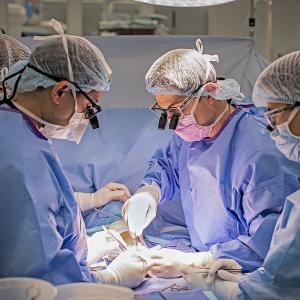
Dr. Steven Yang, Clinical Associate Professor, Department of Orthopaedic Surgery, helped spearhead NYU Langone's new "wide-awake" outpatient hand surgery program.
Photo: Karsten Moran
In most hospitals, surgery on the hand and wrist is usually performed using regional anesthesia and intravenous sedation, or general anesthesia. Patients must undergo preoperative tests, fast starting the night before, and spend an hour or more in a recovery room. In September, NYU Langone became one of the first medical centers in the US to change those protocols. At the Outpatient Surgery Center on East 38th Street, a new operating room is dedicated to “wide-awake” hand surgery, which allows many of these surgical procedures to be performed “as quickly and easily as a trip to the dentist,” explains orthopaedic surgeon S. Steven Yang, MD, who helped spearhead the new program. “When patients are done, they can go home without needing an escort.”
With outpatient surgery becoming increasingly common, why is that so unusual? Traditionally, hand and wrist surgeons have used an arm tourniquet to limit bleeding, but the pressure it causes is often so uncomfortable that medication is required to make it tolerable. Alternative approaches that don’t use a tourniquet have long been limited because physicians were reluctant to use epinephrine—a drug that constricts blood vessels and prolongs the effect of local anesthetics—on the hands and wrists.
But all that has changed, thanks to a flood of studies showing that epinephrine is safe, and a technique in which epinephrine blended with a local anesthetic eliminates the need for a tourniquet. Surgery on the hand or fingers can now be performed without an IV, sedatives, or preoperative testing.
With 17 board-certified hand surgeons, NYU Langone’s Division of Hand Surgery is the largest program of its kind in the country, performing more than 5,000 procedures annually. Wide-awake surgery is used for a range of operations, from the excision of a ganglion cyst or a carpal-tunnel release to more complex procedures. The new technique can also improve outcomes. A fully conscious patient can move their hand and fingers, enabling the surgeon to assess the results in real time. The surgeon can also communicate with the patient, soothing any nervousness. The only pain is the sting of the initial shot.

